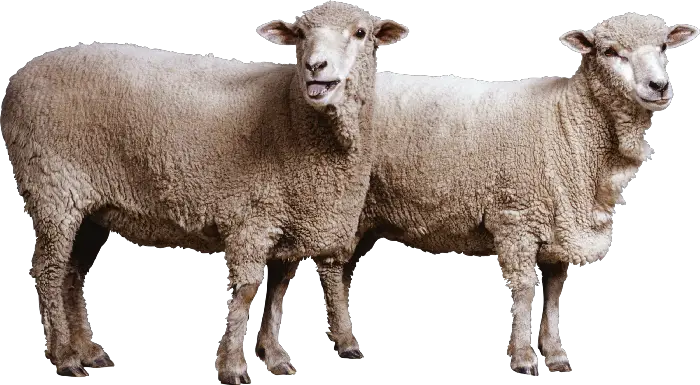 olly the sheep used to be the most popular animal in the world due to the controversy of how she was created (no quotations). Within the 20th century, the world of science really embraced the sci-fi genre as the brightest minds in the world had the capabilities to create such technologies, but they lacked the resources as well as the technology required to produce future tech.
olly the sheep used to be the most popular animal in the world due to the controversy of how she was created (no quotations). Within the 20th century, the world of science really embraced the sci-fi genre as the brightest minds in the world had the capabilities to create such technologies, but they lacked the resources as well as the technology required to produce future tech.
Despite the desire for touch screens and flying cars, what scientists wanted is efficiency. Efficiency in their mind came in two different packages, removing the old way of breading and enhancing the genes between species. In other words, creating the “perfect organism”.
Some may argue that the first cloned animal or organism for that matter was a sea urchin from 1885, but that is not really considered cloning in the literal sense. In 1885 Hans Adolf Edward Dreisch shacked two-celled sea urchin embryos in order to separate the cells. Once they separated each grew into an identical sea urchin.
Many other experiments and types of “cloning” took place since 1885, but it wasn’t until 1996 that the first proper mammal was cloned from an adult nucleus cell. The difference between all the other previous attempts and methods used is that none of them carried the exact DNA over to the clone.
The creation of Dolly
To most of us who see scientific jargon as a different language, cloning through somatic cell nuclear transfer does not seem to mean much, but God does it mean a lot. The Genetic Science Learning Centre offers the best possible description that can be understood by everyone.
“Every cell’s nucleus contains a complete set of genetic information. However, while embryonic cells are ready to activate any gene, differentiated adult cells have shut down the genes that they don’t need for their specific functions. When an adult cell nucleus is used as a donor, its genetic information must be reset to an embryonic state. Often the resetting process is incomplete, and the embryos fail to develop.” (GSLC)
What is more fascinating is the low chances for this specific cloning process to work. The procedure took place at the Roslin Institute in Scotland, part of the University of Edinburgh, in 1996. This experiment was led by Ian Wilmut, an English embryologist who is very acclaimed in his field, not only for cloning the first mammal but also for his bright mind within the academic field.

Keith Campbell was the other bright mind behind this experiment and was assured that the time had come for the world to see the real power of science and to give them a taste of what the future of biology has to show. For this to work, over 277 eggs from sheep that were part of the Scottish Blackface species were collected.
The idea behind this specific method of cloning was to show that you can re-create life from one single DNA cell, given the right conditions. The cell of the Scottish Blackface would be changed nucleus from a cell of the Finn Dorset species. From the 29 embryos collected only one survived, the one that gave life to Dolly.
Wilmut understood that there wasn’t much hope for success, despite placing the cell in favorable conditions. This was well understood by the research after 100 failed attempts, but they didn’t stop. It was sort of a miracle that Dolly was created on the 267th attempt, second last as there were only 277 eggs, therefore 277 attempts.
Originally code-named “6LL3,” the cloned lamb was named after singer and actress Dolly Parton. The name was reportedly suggested by one of the stockmen who assisted with her birth after he learned that the animal was cloned from a mammary cell. Dolly came to the world 148 days later and it was announced publicly in February 1997, that is when the media came down like a wrecking ball on the team of researchers.
The Controversy of Cloning
The headlines stated “Scientists Playing God” as the audience became furious at the existence of Dolly. Most people are affected by cloning as it goes against religious beliefs because this is not the way God intended it to be. The second psychological effect that caused hatred is the fear of bringing human cloning closer to reality and what the future could await.
At this moment in time, 25 years later to be more specific there have been over 20 different species of mammals successfully cloned. The controversy was reinforced by two social/political camps that formed around that issue. In the other corner, you had those that saw the birth of Dolly as humanity stepping into a new era.
Those people actually saw the great potential this procedure had to save endangered species by cloning them. In 2000 the first endangered species were cloned using the same procedure. Yet those who were part of the opposing team started an ethical war that forced governments all over the world to create laws that prohibit cloning, especially human cloning in case any scientist thinks of trying that.
The first law actually came out in the United States in 2003 entitled “Human Cloning Prohibition Act of 2003” establishing a comprehensive ban on human cloning and prohibiting the importation of a cloned embryo, or any product derived from the such embryo.
Although the research paper was also published only by Nature, it has been removed due to the pressure created by the controversy. Such laws and actions show that the world is terrified that what once they thought would only exist in science fiction movies, novels and their own imagination is becoming a reality.
Based on the Greek presocratic sophist Gorgias (c. 483–375 BC) who created Solipsism, “any thought that comes to one’s mind can become a reality”.
Due to the ethical pressure that had been created scientists shifted their focus for a few years until people had forgotten and they started cloning again. The stupidity of society which is very much present today is to shout and scream for about a week about “how unethical” something is until no one cares and they stop carrying it.
Dolly was euthanized in 2001 due to health complications that have been investigated and turned out to have not been caused by the cloning. You can imagine how many people must have used this as an accusation to build even more controversy against cloning. Her corpse was stuffed and is now preserved at Scotland’s Royal Museum.
Avid Writer with invaluable knowledge of Humanity!
Upcoming historian with over 30 million views online.
“You make your own life.”





